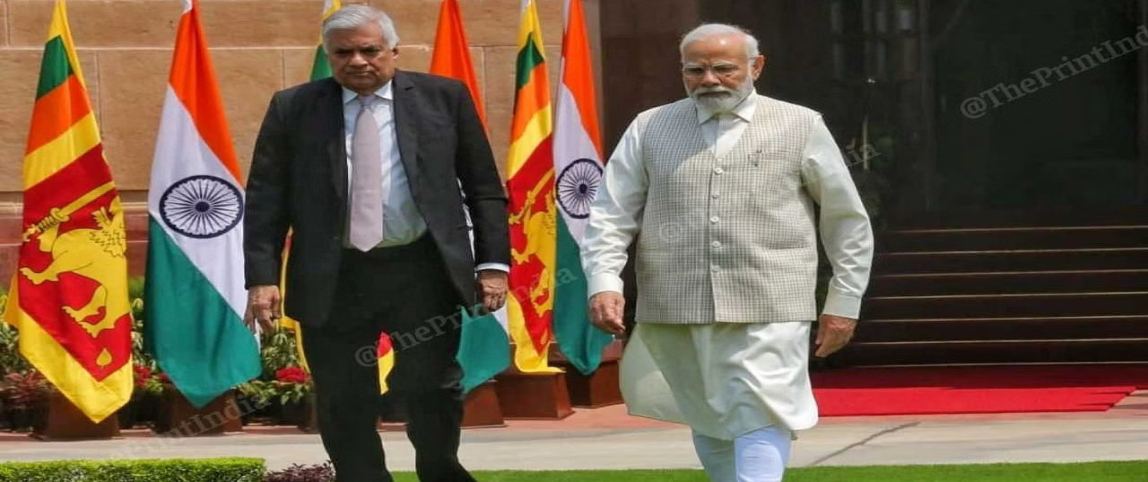India-Sri Lanka Ferry Service Brings Tamils Closer To Tamils. It’s Smart Economics Too
JYOTI MALHOTRA / The Print, India | 18/10/2023
Text Size:
Hours before India and Pakistan confronted each other on the cricket battlefield of Ahmedabad this weekend, while the rest of the world was focused on the Israel-Palestine conflict, Union Minister of Ports, Shipping and Waterways Sarbananda Sonowal and Tamil Nadu Minister for Public Works, EV Velu, flagged off a ferry service from Nagapattinam to Kankesanthurai in Jaffna, that will give people from India and Sri Lanka more options to connect with each other.
What’s the big deal, you might ask. After all, the ferry fare is Rs 7,670, almost the same as the airfare from Chennai to Jaffna; moreover, the ferry takes four hours compared to the plane’s journey under an hour. Why should we really care about this boat restarting after 40 years?
Here are six reasons why this ferry is a critical link in the game-changing relationship between India and Sri Lanka. And this is not because Prime Minister Narendra Modi sent a video message, which described the “vision of connectivity” that goes beyond the boat and includes digital payments, fintech and a joint energy grid. Or that Minister of External Affairs, S Jaishankar, virtually flagged off the service from New Delhi. Sri Lanka’s Ports, Shipping and Aviation minister Nimal Siripala de Silva had to return helter-skelter from Kankesanthurai as he couldn’t attend the ceremony of receiving the first boat. The honours were done by local Sri Lankan officials and India’s Consul General in Jaffna Raakesh Natraj.
First, the ferry brings people closer together. The people of northern and eastern Sri Lanka — in Jaffna, Trincomalee, Mullaitivu, Talaimannar and many other towns and villages in between, which were once known because of the civil war of 1983-2009, until the Liberation Tigers of Tamil Eelam (LTTE) were finally defeated with the death of Prabhakaran — are predominantly Tamil. They have much in common with Tamil Nadu, such as language, religion, customs, and ethnicity. The ferry gives them another option, besides air travel.
Second, this is just the first such service between the two countries. Two more are on the horizon, between Rameswaram and Talaimannar, and Karaikal, near Pondicherry, to Kankesanthurai. The revival of the Rameswaram ferry will reignite memories of the past, when a ferry would ply from Dhanushkodi to Talaimannar. But the town in Tamil Nadu was destroyed in a cyclone in the 1960s taking the ferry with it.
Third, the ferry allows every passenger to carry 150 kg of goods while flights restrict you to mostly 30 kg. Why would I not take the boat if other costs are equal?
Third, to catch the plane from Palaly, which is the tiny airport outside Jaffna, passengers must clear all kinds of security checks. That doesn’t mean the plane isn’t popular. It is, and gets sold out really quickly – most passengers are Sri Lankan Tamil diaspora and it is unsettling to hear French and Tamil, but no English leave alone Hindi, being spoken all over Jaffna. But it’s equally true that the plane is really for the worldly-wise who know how to negotiate things, while the boat is for the less affluent.
Fourth, greater connectivity between people allows both sides to catharsise the trauma that has been building over the last four decades since India trained the Tamil Tigers in the early 1980s (under the Indira Gandhi government), and then fought them in the wake of the India-Sri Lanka accord in 1987, that was followed by a disastrous civil war between Sri Lankans that ended only in 2009.
Sixth, in the current situation—as Sri Lanka emerges from an economic crisis—the ferry is another example of India promoting greater regional connectivity with the neighbourhood. India gave $3.9 billion in aid before and during the crisis, both in cash and kind like fuel, medicines, etc, which has been much appreciated by Sri Lankans. Both sides increasingly recognise that economics can also be good politics.
This article was first published in ThePrint
















